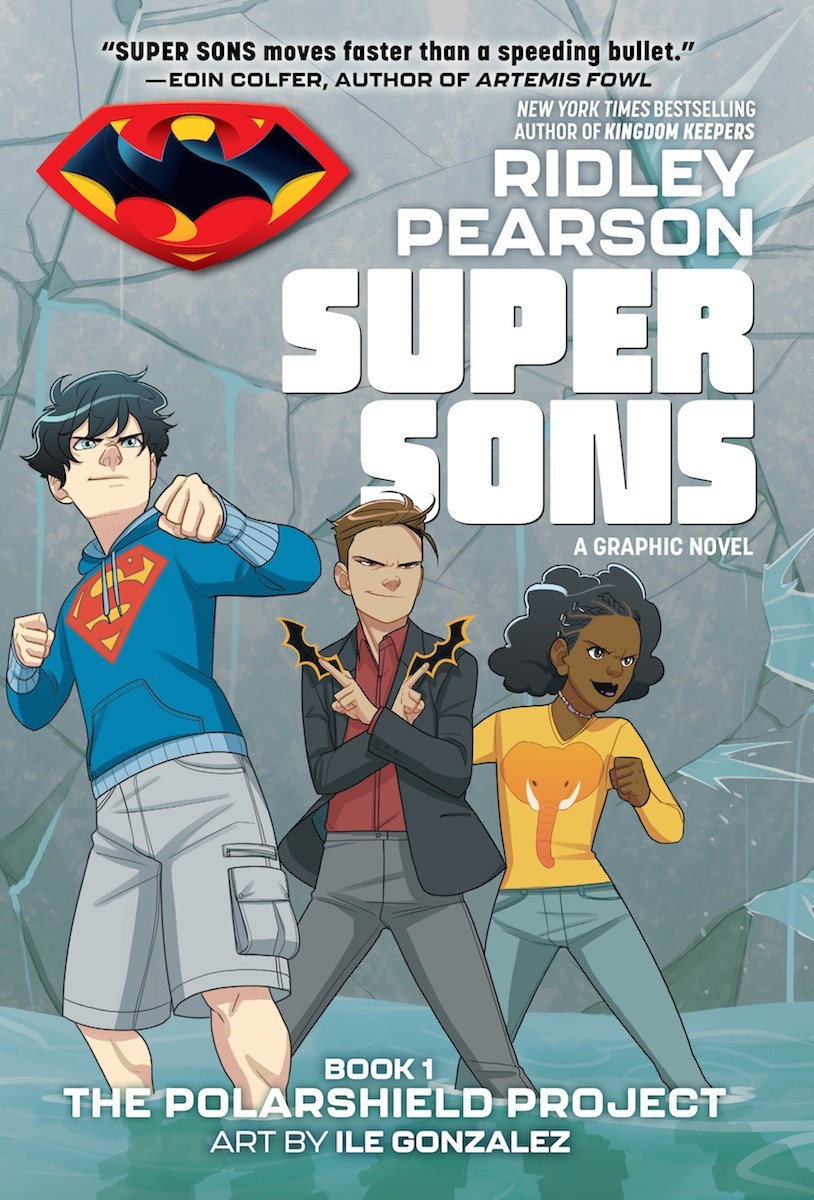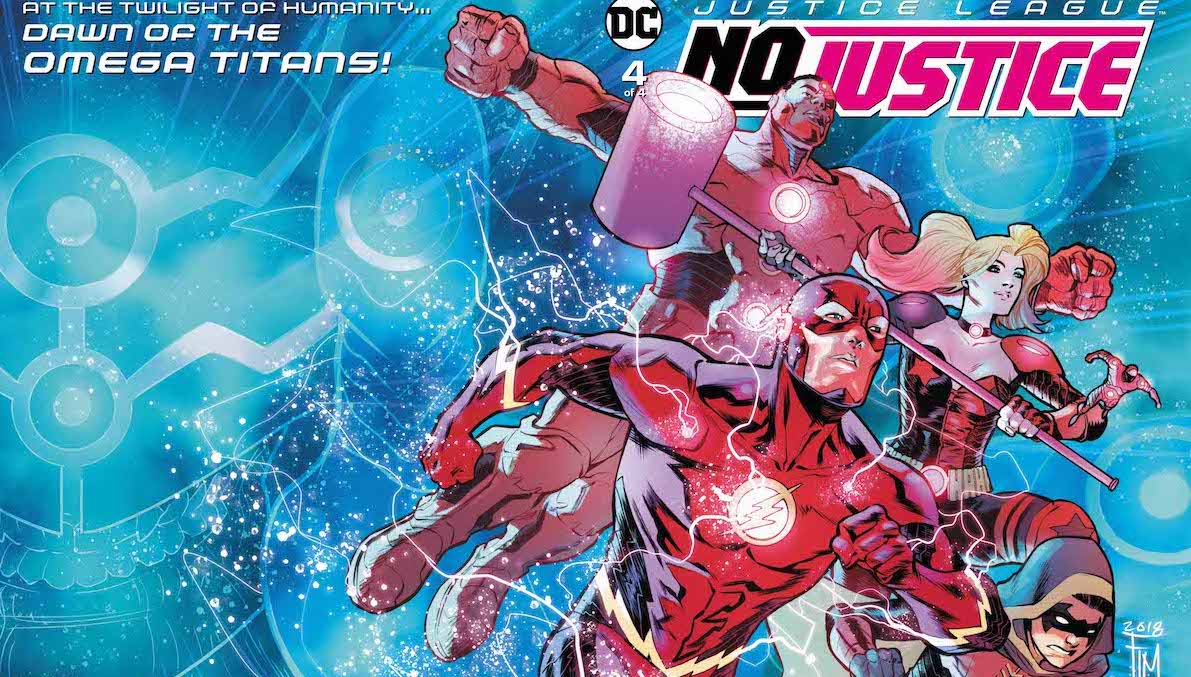
Super-Sons: The Polarshield Project – Ridley Pearson, Writer; Ile Gonzales, Artist; Saida Temofonte, Letterer
Ray – 3/10
The DC Zoom line, a counterpart to the more mature DC Ink line, is designed as a series of all-ages graphic novels starring DC’s most iconic characters. Top talents like Dustin Nyguen and the Baltazar/Franco team are putting their spin on lighthearted versions of DC’s top heroes, alongside more serious projects like Gene Luen Yang’s upcoming Superman vs. The Klan.
The first book to debut from the line, though, is a total reinvention of one of DC’s newest properties from a big name in middle-grade literature. That would be Super-Sons: The Polarshield Project from Ridley Pearson, the author of the popular Disney-branded Kingdom Keepers series paired with artist Ile Gonzales. Super-Sons as a property is just over two years old, making it an odd choice to reinvent for the casual reader.
It also turns out to be an odd book in many other ways.
From the start, there’s a strange tone to this comic with the opening note from Pearson where he tells us that these are going to be very different versions of Jon Kent and Damian Wayne. He definitely delivers on that note – this entire narrative is filled with bizarre changes to DC history that don’t really seem to serve any purpose. For one thing, the story no longer takes place in America. The cities of Gotham and Metropolis now exist in the fictional nation of Coleumbria, a country described as an idyllic democracy governed by a benevolent Governor-General – but in the middle of terrible climate change upheaval that not even Superman can stop. This book has a lot of current events on its mind, and I don’t think it’s a bad idea to introduce kids to them early – but this book tends to handle them with all the subtlety of a sledgehammer. Ile Gonzales’ art is fun and cartoony, but out of step with the serious topics here.

The Super-Sons do not know each other yet when this story begins, as it doesn’t feel like superheroes are particularly organized here. Superman is busy with the climate crisis, and Jon isn’t on the scene as a superhero yet. Superman and Lois try to keep him from exposing his secret identity, and I once again wish Lois had more to do in this issue than scold and mother-hen (before her abrupt exit from an active role in the story).
When the climate crisis threatens Metropolis, Jon and Lois move to the new city of Wyndemere where they’re hated as “Flood-runners”, a hateful term violent bullies use to attack climate refugees. I understand what this book is going for, commenting on the anti-refugee bias, but do we really need to explain it through people moving from one city to another? No one in Green Bay is going to attack a Kansas City transplant. Kids are capable of understanding bigotry as it exists.
For all the issues with Jon’s narrative, it’s still the superior one to what this book has done to Damian Wayne – or should I say “Ian”? The Bat-family doesn’t resemble any I’ve ever seen. Bruce is largely an absentee father, and Damian is somehow even snottier than he is in the main comics. The book got a lot of flack at the outset for its whitewashed depiction of Damian and they’ve fixed that somewhat – now instead of looking like a prep-school boy from Connecticut, he looks like a prep-school boy from Connecticut after a week in the Florida sun.
He’s not Robin yet, instead dressing up in a makeshift ridiculous costume and calling himself “Batkid”. In fact, it seems there are no Robins in this world and he’s an only child. Making things worse, it’s implied Alfred died at some point off-page and he’s been replaced in Damian’s life by Bruce’s assistant Patience – a largely flat character who seems bored in most of her scenes.
The two are eventually brought together by the third major character – Candace, a young black girl with a mysterious past who comes from the poorly-named fictional land of “Landis”. Her struggle to figure out her true identity and her possibly-magical legacy is the strongest part of the issue, but she’s jumbled up in a complex plot involving corporate sabotage, a mysterious plague that sweeps up several major players, and the climate conspiracy that may be intentional.
This is a book with about five too many subplots for a debut, and it feels like we barely know the characters by the time it’s over. And speaking of over, the book doesn’t so much end as just…stop. Like Mera: Tidebreaker, it’s clearly designed to be the first in a series – but unlike that one, its cliffhanger is nondescript. I do appreciate the attempt to add some more diversity and female characters to the Super-Sons mythos, but the execution is sorely lacking. The main Super-Sons book can be frustratingly irregular, but there’s a sense of genuine fun to that one. Here, I don’t see anything that will bring kids back for a second volume a year from now.
To find reviews of all the DC issues, visit DC This Week.
Disclaimer: GeekDad received this comic for review purposes.




